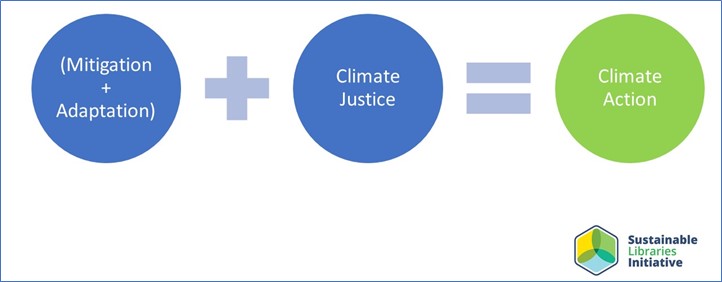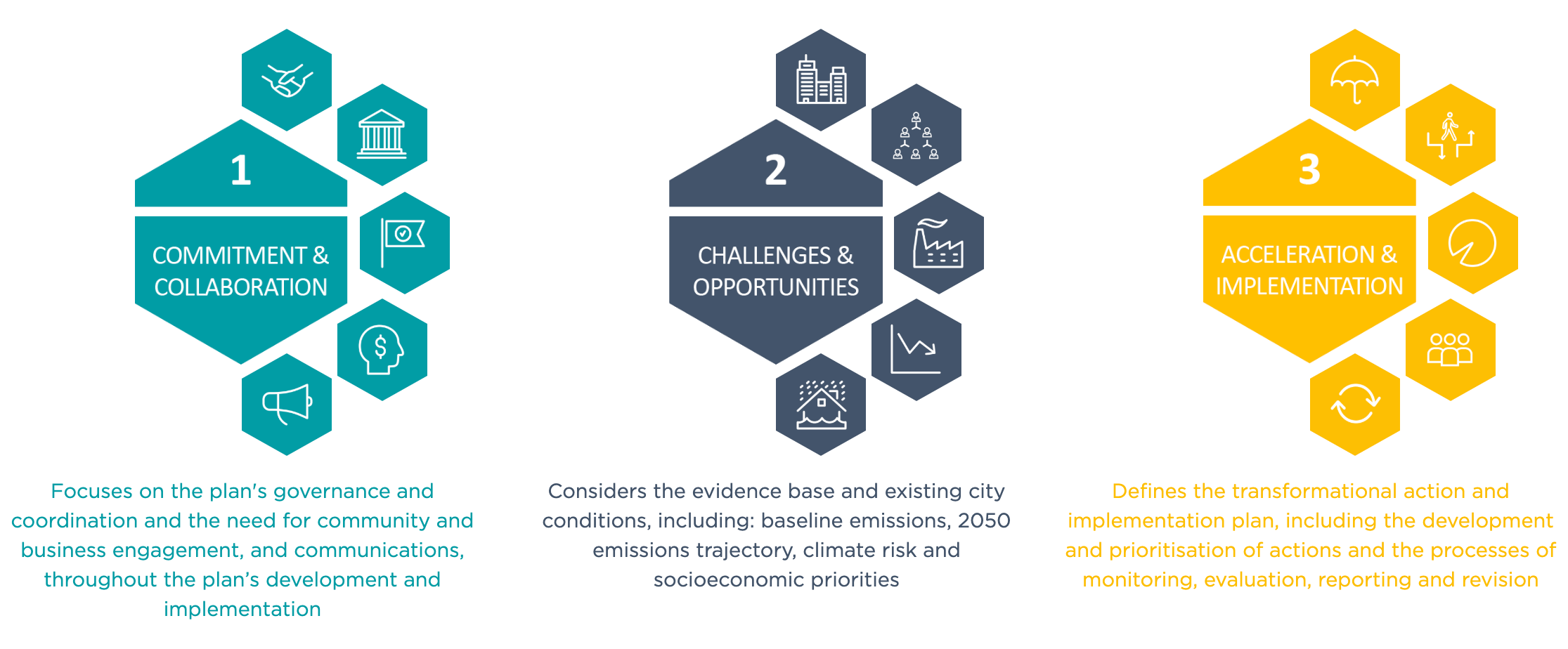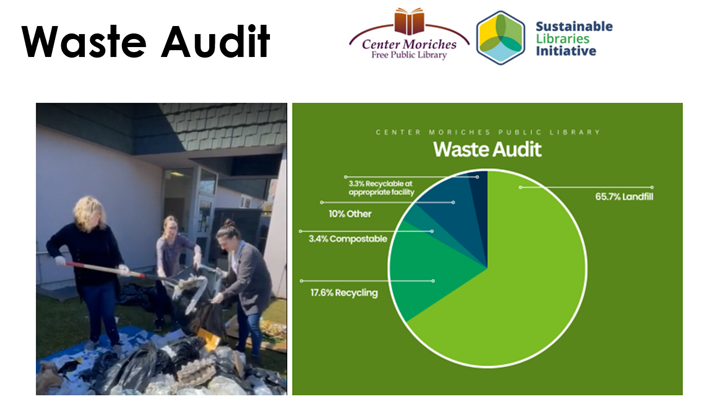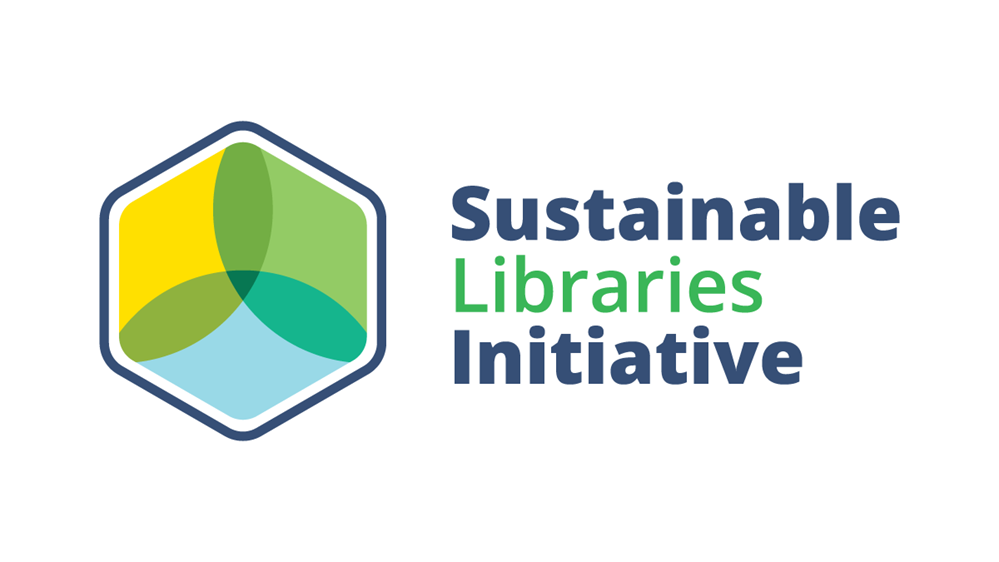Getting Started with Climate Action Planning
This article is part of the series of resources and webinars created by the Sustainable Libraries Initiative team, in collaboration with WebJunction, to support libraries in creating a more sustainable future.
The Sustainable Libraries Initiative (SLI) provides library leaders with a proven path forward to co-create libraries and communities that will thrive in the coming years. As we contend with the realities of climate change, we must act faster, with more concentrated action than ever before.
We must not waste time in putting our pens to paper to create a Climate Action plan. The Sustainable Libraries Initiative and the American Library Association are partnering to create a National Climate Action Strategy for Libraries, but in the meantime, your library cannot wait for someone else to do this work for you. Start now.
The SLI defines Climate Action using this formula: the combination of both climate change mitigation (reduction of greenhouse gas emissions) and climate change adaptation (helping people, institutions and communities thrive in the face of climate change) with an overarching dedication to climate justice (increasing the empathy, respect, and understanding we have of all community members).

The reality of climate change is that it is already here; we are experiencing the impacts NOW. At the same time, we are being called upon to act NOW to lessen the increasingly dire predicted outcomes of climate change in the future—something we can, unfortunately, relate to as we experience the effects of climate change at an intensity level decided by the past generations’ inaction to reduce greenhouse gas emission. This work needs to happen on parallel paths with equal urgency.
Climate justice needs to be present in all thinking related to climate change mitigation and adaptation. As we make decisions about alternative energy sources, products with less of a negative impact on the environment, and plans to increase a community’s resilience in the face of disruptive events triggered by climate change, we always must keep the human impact of these choices front and center. We must continuously work to increase the empathy, respect, and understanding neighbors—locally and globally—have for one another as we forge a new future.
Getting Started
The Climate Action Planning Framework, developed to support cities in developing climate action plans that are aligned with the objectives of the Paris Agreement, can easily be translated into use by libraries. The framework has three phases:

- Need for community engagement and communications throughout development and implementation
- Considers the evidence, existing conditions, baseline emissions, emissions trajectory for 2050, and socioeconomic priorities
- Defines the transformational action and implementation plan; identifies processes of monitoring, evaluation, reporting and revision
Adapting the steps within the three phases for libraries can look like this:
- Leadership Buy-In
- Stakeholder and Community Engagement
- Strategy Identification
- Plan Compilation
- Governance (i.e., policy, governance structure, enabling conditions)
- Evidence of Positive Change (i.e., measurement)
- Action Prioritization and EDI Considerations
- Monitoring, Evaluation, and Reporting
The importance of leadership buy-in and stakeholder and community engagement at the outset of a climate action planning process is key. Just like with library strategic/long-range planning activities, the plan is irrelevant if no one understands the need for it, why the identified priorities were chosen, or who is going to lead the way.
Before moving on to Step 3 shown above, it will save time and energy to first see what work has already been done on this topic in your community, on your campus, or in your school. Obtaining regional/local climate action or sustainability plans can help accelerate your work. Identifying who is doing what in the community through a community asset mapping exercise can also accelerate work by aligning with partners who may have already started down a needed path or who want to work together for collective impact. (Check out this resource from the UCLA Center for Health Policy Research to learn more about community asset mapping [PDF].)
Climate Change Mitigation
- Electricity usage in your workplace
- Transportation (e.g., commuting, conference travel, deliveries)
- Waste stream (Pro tips: Conduct a waste audit. See Library Waste Audit on the Sustainable Libraries Initiative website and then check out The Zero Waste Hierarchy 8.0)

Members of the SLI have access to a custom CO2 calculator to produce their emissions calculations but non-members can find free calculators online that you can knit together to conduct a DIY emissions inventory as well.
Once completed it’s time to set a goal to reduce greenhouse gas emissions in your library. Include a base year and a target year, be aggressive in your goal, and be specific, for example, 30% reduction over 5 years. The current United States target is 50% reduction from 2005 levels in economy-wide net greenhouse gas pollution by 2030—talk about aggressive!
Climate Change Adaptation and Climate Justice
Climate change adaptation and climate justice are key components in creating an effective Climate Action plan. These topics will be covered in-depth in upcoming articles in this series. Don’t miss the recording for Climate Action Planning (Part 2): Disaster Preparedness and Community Resilience, the next session in this series for more in-depth information on this section of your plan.
Pulling It All Together
The Concord Free Public Library in Massachusetts, a member of the Sustainable Library Certification Program, has created a Sustainability Plan that focuses on strategies in two key areas:
- Built Environment & Operations
- Outreach & Education
Their plan also addresses alignment with key stakeholders, defines key terms, reports on where their efforts currently are, and lays out a process for implementation and tracking.
This is but one example of what a climate action plan can look like. There are not many out there to point to at the time of this resource being developed. It is our sincere hope that our work through this partnership with WebJunction accelerates the creation, adoption, and implementation of climate action plans in libraries throughout the country.
There is no time to waste.
Case Studies
Explore these resources and case studies for further examples:
Webinars in the series
Visit each listing for recordings and handouts and use the Series Learner Guide (doc) together or with others, to take action on your learning.
Sustainability 101
Recording now available
Climate Action Planning (Part 1): An Introduction
Recording now available
Climate Action Planning (Part 2): Disaster Preparedness and Community Resilience
Recording now available
Climate Justice
Recording now available
Living Our Values Out Loud: Programs that Walk the Talk
Recording now available
Stronger Together: Collective Impact and Climate Action Programming
Recording now available
Inspired to learn more?
If you’re looking for climate justice strategies you can subscribe to the free, monthly newsletter of the Sustainable Libraries Initiative for more ideas, stories from the field, and resources to help your library and community.

